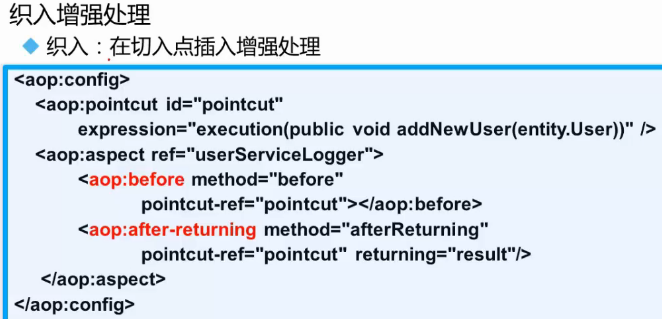一.什麼是控制反轉 二.使用Spring IoC的步驟: 1、到入Spring 相關的Jar包(spring-expression,spring-core,spring-context,spring-beans,log4j,commons-logging) 2、編寫java類 3、編寫Spring的 ...

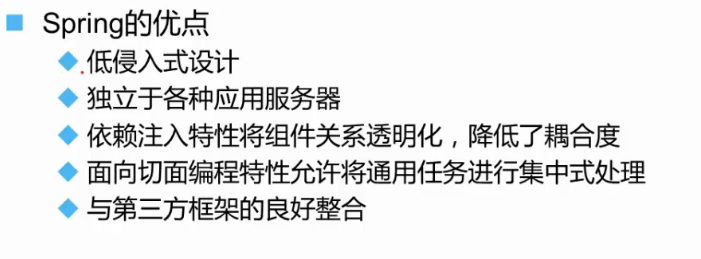
一.什麼是控制反轉

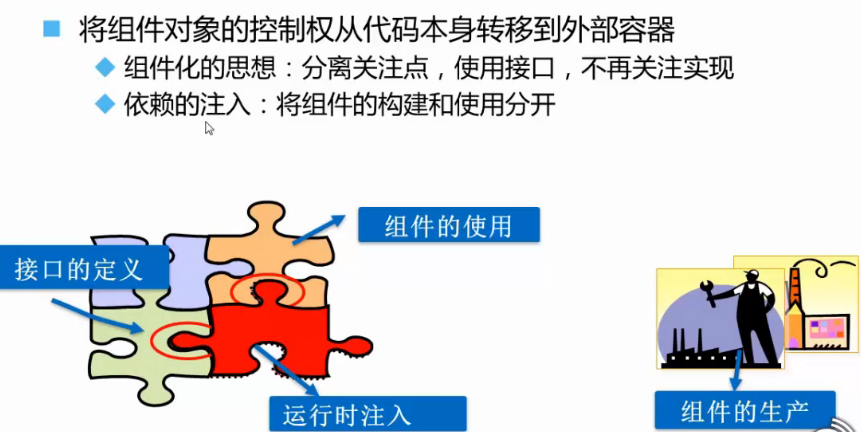
二.使用Spring IoC的步驟:
1、到入Spring 相關的Jar包(spring-expression,spring-core,spring-context,spring-beans,log4j,commons-logging)
2、編寫java類
1 public class HelloSpring { 2 // 定義who屬性,該屬性的值將通過Spring框架進行設置 3 private String who = null; 4 5 /** 6 * 定義列印方法,輸出一句完整的問候。 7 */ 8 public void print() { 9 System.out.println("Hello," + this.getWho() + "!"); 10 } 11 12 /** 13 * 獲得 who。 14 * 15 * @return who 16 */ 17 public String getWho() { 18 return who; 19 } 20 21 /** 22 * 設置 who。 23 * 24 * @param who 25 */ 26 public void setWho(String who) { 27 this.who = who; 28 } 29 30 }
3、編寫Spring的配置文件(ApplicationContext.xml)和編寫了bean
<?xml version="1.0" encoding="UTF-8"?> <beans xmlns="http://www.springframework.org/schema/beans" xmlns:xsi="http://www.w3.org/2001/XMLSchema-instance" xsi:schemaLocation="http://www.springframework.org/schema/beans http://www.springframework.org/schema/beans/spring-beans-3.2.xsd"> <!-- 通過bean元素聲明需要Spring創建的實例。該實例的類型通過class屬性指定,並通過id屬性為該實例指定一個名稱,以便在程式中使用 --> <bean id="helloSpring" class="cn.springdemo.HelloSpring"> <!-- property元素用來為實例的屬性賦值,此處實際是調用setWho()方法實現賦值操作 --> <property name="who"> <!-- 此處將字元串"Spring"賦值給who屬性 --> <value>Spring</value> </property> </bean> </beans>
4、編寫test類:創建applicationContext的介面
1 public class HelloSpringTest { 2 3 @Test 4 public void helloSpring() { 5 // 通過ClassPathXmlApplicationContext實例化Spring的上下文 6 ApplicationContext context = new ClassPathXmlApplicationContext( 7 "applicationContext.xml"); 8 // 通過ApplicationContext的getBean()方法,根據id來獲取bean的實例 9 HelloSpring helloSpring = (HelloSpring) context.getBean("helloSpring"); 10 // 執行print()方法 11 helloSpring.print(); 12 } 13 14 }
三.AOP(面向切麵編程)的定義和原理


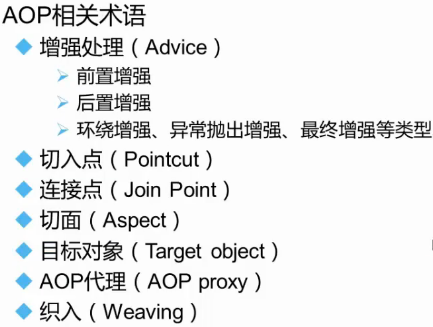
四.怎樣使用AOP
1、增加Spring AOP的Jar文件
2、編寫前置增強和後置增強實現日誌功能
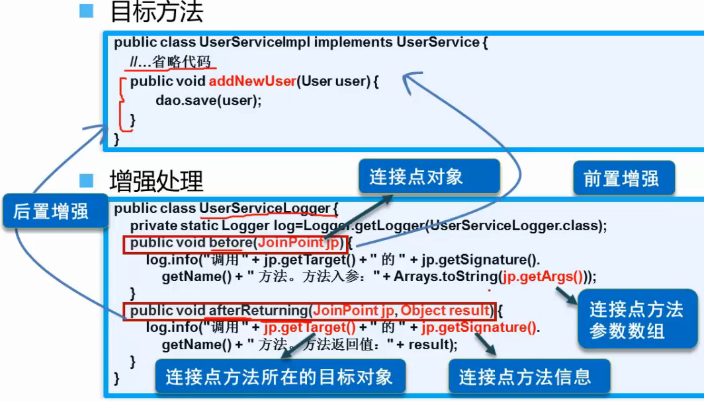
3、編寫配置文件,對業務方法進行增強

4、編寫代碼獲取帶有增強處理的業務對象
